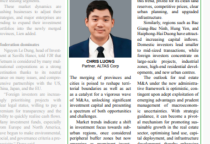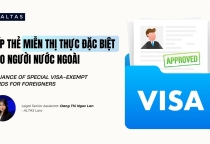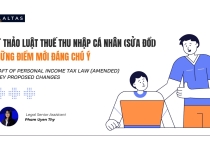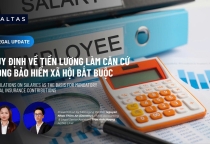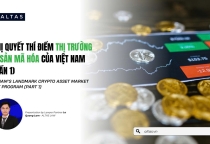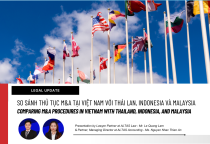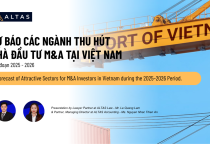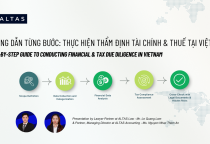The latest Vietnam’s Law on Enterprises 2025 and the latest Decree 168/2025/ND-CP on enterprise registration introduce the concept of Ultimate Beneficial Ownership ("UBO"), which imposes an obligation to declare and disclose information transparently.
This Article aiming to support the enterprises identify beneficial owners based on the criteria of "capital contribution" or "controlling rights" in accordance with current legal regulations.
A/ Who are individuals with controlling rights in legal entities according to the current Vietnam Law on Enterprises?
1/ Joint Stock Company (JSC)
-
A shareholder owning a large proportion of shares (or voting shares) has the greatest controlling power.
-
The General Meeting of Shareholders (GMS) is the highest authority, deciding on important matters.
-
The GMS elects the Board of Directors (BOD), which has the right to appoint and dismiss the Chairman of the BOD, Director, and General Director.
-
The individuals holding the positions of Chairman of the BOD, Director, General Director have the right to manage operations and appoint subordinate personnel.
2. One-member Limited Liability Company
-
The owner (individual or organization) who has the ultimate right to appoint and dismiss the legal representative, Director, and General Director.
-
The owner has full power to decide on management, operation, charter amendments, changes in organizational structure, reorganization, and dissolution.
Two-member or more Limited Liability Company
-
The Members' Council (MC) is the highest authority, elected by the capital contributing members.
-
The MC has the right to appoint and dismiss the Chairman of the MC, Director, and General Director.
-
Individuals holding these titles have the right to manage operations and appoint subordinates.
3. Partnership Company
-
General partners are individuals who have the right to manage and operate the company, act as legal representatives, and bear unlimited liability.
-
General partners have the right to appoint, dismiss, amend the charter, change the organizational structure, reorganize, and dissolve the company.
-
Contributing partners only contribute capital, do not participate in management, and have no controlling rights.
B/ Summary table of controlling rights by enterprise type
Legal Entity Type |
Main Controlling Person/Body |
Main Rights |
Joint Stock Company (JSC) |
Major shareholder, Chairman of BOD, Director |
Decisions of GMS, appointment of BOD, charter amendment, organizational structure change |
One-member LLC |
Sole owner |
Full management rights, appointment of legal representative, charter amendment |
Two-member or more LLC |
Major Contributing Member, Chairman of MC, Director |
Decisions of MC, appointments, charter amendment |
Partnership Company |
General partner |
Management, legal representation, appointments, charter amendment |
C/ Steps to identify the Beneficial Owner of an enterprise:
1. Step 1: Check for individuals directly owning 25% or more of the charter capital or voting shares.
-
If yes, that individual is the BO.
-
If no, proceed to step 2.
2. Step 2: Check for individuals indirectly owning 25% or more of the charter capital or voting shares through another organization.
-
If yes, that individual is the BO.
-
If no, proceed to step 3.
3. Step 3: Check for individuals who directly owning less than 25% of the charter capital or voting shares whether they have “controlling rights” over at least one of the following rights:
-
Appointing, dismissing, or removing the majority or all members of the Board of Directors, Chairman of the BOD, Chairman of the MC; Legal representative, Director, or General Director;
-
Amending or supplementing the enterprise charter;
-
Changing the company's management organizational structure;
-
Reorganizing or dissolving the company.
-
If yes, that individual is likely the BO.
-
If no, not identifiable as BO according to this criterion.
-
4. Step 4: Declare the information of the individual identified as the BO.
Summary table for BO identification:
Step |
Specific Criteria |
Conclusion if True |
Next Action |
1. Direct Capital Ownership |
Individual owns >= 25% of charter capital or voting shares |
Individual is BO |
Declare this individual's information |
2. Indirect Capital Ownership |
Individual owns >= 25% of charter capital or voting shares through another organization (see section D below) |
Individual is BO |
Declare this individual's information |
3. Controlling Rights |
Individual has the right to appoint, dismiss the majority or all members of BOD, Chairman of MC, Director, amend charter, change structure, reorganize, dissolve |
Individual is BO |
Declare this individual's information |
4. Not meeting criteria |
Not identifiable as BO according to Decree 168/2025 |
Not identifiable as BO by this criterion |
Continue review or report as per regulations |
D/ Examples of identifying BO according to indirect capital ownership criteria
Example 1: Company A has 2 contributing members, including:
-
Mr. A owns 75% of the charter capital.
-
Company B owns 25% of the charter capital.
-
Company B has 3 individual shareholders, including:
-
Individual X owns 40% of Company B's shares.
-
Individual Y owns 40% of Company B's shares.
-
Individual Z owns 20% of Company B's shares.
-
All are voting shares.
-
-
So, who is the beneficial owner of Company A?
Based on the provisions of Decree 168/2025/ND-CP, we analyze the identification of Company A's beneficial owner as follows:
1. Mr. A directly owns 75% of Company A's charter capital
-
According to criteria (i) of Decree 168/2025/ND-CP, Mr. A is an individual who directly owns over 25% of Company A's charter capital → Mr. A is the beneficial owner of Company A.
2. Company B shareholders own 25% of Company A's capital
-
Company B is an organization that owns 25% of Company A's capital.
-
According to the regulations on indirect ownership, it is necessary to identify individuals who own 25% or more of Company B's charter capital or voting shares to determine the individuals indirectly owning Company A.
3. Identifying individuals indirectly owning Company A through Company B (*)
-
Individual X owns 40% of Company B's capital → 40% x 25% = 10% of Company A's capital (indirectly).
-
Individual Y owns 40% of Company B's capital → 40% x 25% = 10% of Company A's capital (indirectly).
-
Individual Z owns 20% of Company B's capital → 20% x 25% = 5% of Company A's capital (indirectly).
4. Assessment according to the 25% charter capital or voting shares criterion
-
None of individuals X, Y, or Z indirectly own 25% or more of Company A's capital.
-
Therefore, according to the indirect ownership criterion, no individual in Company B's shareholder group is identified as a beneficial owner of Company A.
5. Further assessment according to the "controlling rights" criterion
-
If individual X, Y, or Z has controlling rights according to the provisions of Decree 168/2025/ND-CP (e.g., the right to appoint, dismiss the majority of BOD members, amend the charter, change the organizational structure, etc.) over Company A, then they could also be identified as beneficial owners even if their indirect ownership is below 25%.
-
If there are no such controlling rights, then only Mr. A is the beneficial owner.
Example 2: Company A has 2 contributing members, including:
-
Company A1 owns 75% of Company A's charter capital.
-
Company B owns 25% of Company A's charter capital.
-
Company A1 has 3 individual shareholders:
-
Individual X owns 40% of Company A1.
-
Individual Y owns 40% of Company A1.
-
Individual Z owns 20% of Company A1.
-
So, who is the beneficial owner of Company A?
Based on the provisions of Decree 168/2025/ND-CP, we analyze the identification of Company A's beneficial owner as follows:
-
Identify individuals who indirectly own Company A through Company A1 (*)
-
Company A1 owns 75% of Company A.
-
Individual X owns 40% of Company A1 → 40% × 75% = 30% of Company A's capital (indirect ownership).
-
Individual Y owns 40% of Company A1 → 40% × 75% = 30% of Company A's capital (indirect ownership).
-
Individual Z owns 20% of Company A1 → 20% × 75% = 15% of Company A's capital (indirect ownership).
-
Identify direct ownership of Company A
-
-
Company B owns 25% of Company A.
-
Since Company B is an organization, it is necessary to identify individual shareholders who own at least 25% of Company B to determine indirect ownership. If no such individuals exist or information is unavailable, UBOs via Company B cannot be determined at this time (or otherwise).
-
Apply the criteria under Decree 168/2025/ND-CP
-
-
Individuals X and Y each indirectly own 30% of Company A, which exceeds the 25% threshold per criterion (i) → X and Y are identified as beneficial owners of Company A.
-
Individual Z indirectly owns 15% of Company A, below the 25% threshold → not sufficient to be identified as a UBO based on indirect ownership alone.
-
If individual Z has controlling rights (such as rights to appoint or remove the majority or all members of the Board of Directors, amend the charter, change the organizational structure, etc.) against Company A, they may also be identified as a UBO of the Company A.
In many cases, determining the criteria for "controlling rights" may not be easy if there are special agreements or management structures within the Company that limit the controlling rights of shareholders, for example when voting rights are allocated differently from capital contribution ratios, or when other shareholders have greater control rights. In such cases, the enterprise needs to consult with lawyers for specific guidance.
(*) Currently, the Vietnam Law on Enterprises and Decree 168/2025/ND-CP do not directly state the formula for calculating indirect ownership percentage, and this calculation method is also not clearly defined in the form of a specific formula in any separate legal document of Vietnam. However, calculating indirect ownership percentage by multiplying the individual's ownership percentage in the intermediate organization by that organization's ownership percentage in the final enterprise is a practical method and is widely applied in guidance documents, legal reports, and professional analyses used in Vietnam.
E/ How can ALTAS assist?
ALTAS LAW provides comprehensive legal and accounting/tax service packages designed to seamlessly support during this transition period:
-
Accounting and Tax Services: We provide accounting and tax services to help businesses manage financial impacts, including tax planning, tax finalization, tax audits, and tax refund support.
-
Licensing & Regulatory Compliance: We will meticulously review existing licenses, advise on necessary amendments or renewals, and guide through the licensing/approval process. Our team will also ensure the enterprise complies with all relevant regulatory changes.
Please feel free to reach us via email contact@altas.vn to discuss your specific concerns and explore how we can navigate these reforms successfully.
F/ Other Forms of Establishing "Control Rights"
"Control rights" can be established through various forms: capital ownership, management rights, strategic decision-making rights, agreements, asset usage rights, or non-financial factors. Other controlling cases by agreement, recorded in the enterprise charter or Shareholders' Agreement:
-
A Shareholders' Agreement is a civil document, a contract between shareholders to regulate internal rights and obligations, not mandatory for registration, and currently not officially recognized by state agencies under Vietnamese law. However, according to the regulation on "beneficial owner," enterprises must determine controlling rights based on the actual power and ability to control the enterprise, not just based on official documents such as business registration or charter, but also potentially based on actual agreements between parties. If a Shareholders' Agreement clearly shows controlling rights (e.g., the right to appoint or dismiss the majority of BOD members, the right to amend the charter, the right to decide important matters), the enterprise can use it to identify and declare beneficial owner information.
-
The spirit of current law is that declarations must be truthful and accurate based on actual controlling rights, and information should not be omitted or concealed even if the supporting documents are not officially recognized.









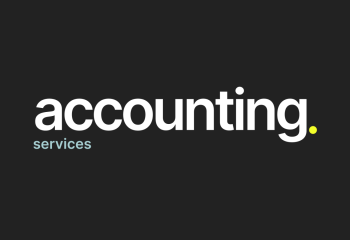

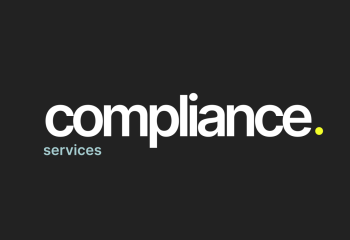


(5).png)
